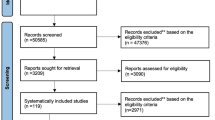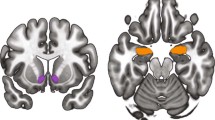Abstract
Some sources suggest that significant misuse of opioid drugs exists among patients with chronic pain. However, the risk factors and motivation behind their abuse may differ from those of other opioid abusers. This study sought to examine the abuse liability of oxycodone among patients with chronic, non-malignant pain who met the DSM-IV criteria for opioid abuse. Eighteen opioid-dependent patients with chronic pain lived on an in-patient unit of the New York State Psychiatric Institute during the 7-week study. Participants were given oral oxycodone (0, 10, 20, 40, and 60 mg/70 kg) while maintained on various doses of sublingual buprenorphine/naloxone (Bup/Nx; 2/0.5, 8/2, and 16/4 mg/day). Doses of both medications were administered under double-blind conditions. Oxycodone produced an overall positive, but less robust, subjective profile than previously reported in recreational opioid users without pain. Furthermore, unlike our findings in recreational opioid users and more similar to effects in non-drug-abusing individuals, oxycodone failed to serve as a reinforcer. As for the maintenance drug, Bup/Nx produced a dose-related reduction in some of the effects of acutely administered oxycodone. These data suggest that sublingual Bup/Nx has the potential as an analgesic medication and further research should investigate its use in treating patients with chronic pain who abuse opioids.
Similar content being viewed by others
Log in or create a free account to read this content
Gain free access to this article, as well as selected content from this journal and more on nature.com
or
References
American Academy of Pain Medicine (APM) and American Pain Society (APS) (1997). The use of opioids for the treatment of chronic pain. A consensus statement from the American Academy of Pain Medicine and the American Pain Society. Clin J Pain 13: 6–8.
Anderson R, Saiers JH, Abram S, Schlicht C (2001). Accuracy in equianalgesic dosing: conversion dilemmas. J Pain Symptom Manage 21: 397–406.
Ballantyne JC (2006). Opioids for chronic nonterminal pain. South Med J 99: 1245–1255.
Ballantyne JC, Mao J (2003). Opioid therapy for chronic pain. N Engl J Med 349: 1943–1953.
Caplan RA, Southam M (1990). Transdermal drug delivery and its application to pain control. Adv Pain Res 14: 233–240.
Comer SD, Ashworth JB, Sullivan MA, Vosburg SK, Saccone PA, Foltin RW (2009). Relationship between rate of infusion and reinforcing strength of oxycodone in humans. J Opioid Manage 5: 203–212.
Comer SD, Collins ED, Fischman MW (1997). Choice between money and intranasal heroin in morphine-maintained humans. Behav Pharmacol 8: 677–690.
Comer SD, Collins ED, MacArthur RB, Fischman MW (1999). Comparison of intranasal and intravenous heroin self-administration by morphine-maintained humans. Psychopharmacology 143: 327–338.
Comer SD, Sullivan MA, Vosburg SK, Kowalczyk WJ, Houser J (2010). Abuse liability of oxycodone as a function of pain and drug use history. Drug Alcohol Depend 109: 130–138.
Comer SD, Sullivan MA, Walker EA (2005). Comparison of intravenous buprenorphine and methadone self-administration by recently detoxified heroin-dependent individuals. J Pharmacol Exp Ther 315: 1320–1330.
Comer SD, Sullivan MA, Whittington RA, Vosburg SK, Kowalczyk WJ (2008). Abuse liability of prescription opioids compared to heroin in morphine-maintained heroin abusers. Neuropsychopharmacolgy 33: 1179–1191.
Cowan A, Lewis JW, MacFarlane IR (1977). Agonist and antagonist properties of buprenorphine, a new antinociceptive agent. Br J Pharmacol 60: 537–545.
Cowan DT, Allan LG, Libretto SE, Griffiths P (2001). Opioid drugs: a comparative survey of therapeutic and ‘Street’ use. Pain Med 2: 193–203.
Davis MP, Varga J, Dickerson D, Walsh D, LeGrand SB, Lagman R (2003). Normal-release and controlled-release oxycodone: pharmacokinetics, pharmacodynamics, and controversy. Support Care Cancer 11: 84–92.
Duke AN, Correia CJ, Walsh SL, Bigelow GE, Strain EC (2010). Acute effects of intramuscular and sublingual buprenorphine and buprenorphine/naloxone in non-dependent opioid abusers. Psychopharmacology (Berl) 211: 303–312.
Dum JE, Herz A (1981). In vivo receptor binding of the opiate partial agonist, buprenorphine, correlated with its agonistic and antagonistic actions. Br J Pharmacol 74: 627–633.
Dworkin RH, Turk DC, Farrar JT, Haythornthwaite JA, Jensen MP, Katz NP et al (2005). Core outcome measures for chronic pain clinical trials: IMMPACT recommendations. Pain 113: 9–19.
Edlund MJ, Steffick D, Hudson T, Harris KM, Sullivan M (2007). Risk factors for clinically recognized opioid abuse and dependence among veterans using opioids for chronic non-cancer pain. Pain 129: 355–362.
Fishbain DA, Rosomoff HL, Rosomoff RS (1992). Drug abuse, dependence and addiction in chronic pain patients. Clin J Pain 8: 77–85.
Gagnon J, Roth JM, Carroll M, Haycock KA, Plamondon J, Feldman DS et al (1990). Superanova accessible general linear modeling. Yale J Biol Med 63: 191–192.
Haertzen CA (1974). An Overview of Addiction Research Center Inventory Scales (ARCI): An Appendix and Manual of Scales. National Inst. on Drug Abuse (DHEW/PHS): Rockville, MD.
Handelsman L, Cochrane KJ, Aronson MJ, Ness R, Rubinstein KJ, Kanof PD (1987). Two new rating scales for opiate withdrawal. Am J Drug Alcohol Abuse 13: 293–308.
Heit HA, Gourlay DL (2008). Buprenorphine: new tricks with an old molecule for pain management. Clin J Pain 24: 93–97.
Johnson RE, Chutuape MA, Strain EC, Walsh SL, Stitzer ML, Bigelow GE (2000). A comparison of levomethadyl acetate, buprenorphine, and methadone for opioid dependence. New Eng J Med 343: 1290–1297.
Johnson RE, Jaffe JH, Fudala PJ (1992). A controlled trial of buprenorphine treatment for opioid dependence. J Am Med Assoc 267: 2750–2755.
Katz N, Fernandez K, Chang A, Benoit C, Butler SF (2008). Internet-based survey of nonmedical prescription opioid use in the United States. Clin J Pain 24: 528–535.
Katz NP, Sherburne S, Beach M, Rose RJ, Vielguth J, Bradley J et al (2003). Behavioral monitoring and urine toxicology testing in patients receiving long-term opioid therapy. Anesth Analg 97: 1097–1102.
Kerns RD, Turk DC, Rudy TE (1985). The West Haven–Yale Multidimensional Pain Inventory (WHYMPI). Pain 23: 345–356.
Lasagna L, Von Felsinger JM, Beecher HK (1955). Drug-induced mood changes in man. I. Observations on healthy subjects, chronically-ill patients, and postaddicts. JAMA 157: 1006–1020.
Malinoff HL, Barkin RL, Wilson G (2005). Sublingual buprenorphine is effective in the treatment of chronic pain syndrome. Am J Ther 12: 379–384.
Martell BA, O’Connor PG, Kerns RD, Becker WC, Morales KH, Kosten TR et al (2007). Systematic review. Opioid treatment for chronic back pain: prevalence, efficacy, and association with addiction. Ann Intern Med 146: 116–127.
Mello NK, Bree MP, Mendelson JH (1983). Comparison of buprenorphine and methadone effects on opiate self-administration in primates. J Pharmacol Exp Ther 225: 378–386.
Mello NK, Mendelson JH (1980). Buprenorphine suppresses heroin use by heroin addicts. Science 207: 657–659.
Mello NK, Mendelson JH, Kuehnle JC (1982). Buprenorphine effects on human heroin self-administration: an operant analysis. J Pharmacol Exp Ther 223: 30–39.
Melzack R (1987). The short-form McGill Pain Questionnaire. Pain 30: 191–197.
Pain Associates International Network (2007). Retrieved from: http://www.pain-initiative.com/pain_services/pain_management_tools (January 2007).
Passik SD, Kirsh KL, Donaghy KB, Portenoy RK (2006). Pain and aberrant drug-related behaviors in medically ill patients with and without histories of substance abuse. Clin J Pain 22: 173–181.
Pereira J, Lawlor P, Vigano A, Dorgan M, Bruera E (2001). Equianalgesic dose ratios for opioids. A critical review and proposals for long-term dosing. J Pain Symptom Manage 22: 672–687.
Rosenblum A, Parrino M, Schnoll SH, Fong C, Maxwell C, Cleland CM et al (2007). Prescription opioid abuse among enrollees into methadone maintenance treatment. Drug Alcohol Depend 90: 64–71.
SPSS I (2006). SPSS 15.0.0 for Windows. Pearson-Prentice Hall: Chicago, IL.
Trescot AM, Boswell MV, Atluri SL, Hansen HC, Deer TR, Abdi S et al (2006). Opioid guidelines in the management of chronic non-cancer pain. Pain Phys 9: 1–39.
US DEPARTMENT OF HEALTH AND HUMAN SERVICES: Center for Substance Abuse Treatment (2004). Clinical Guidelines for the Use of Buprenorphine in the Treatment of Opioid Addiction. Treatment Improvement Protocol (TIP) Series 40. DHHS Publication No. (SMA) 04-3939 Substance Abuse and Mental Health Services Administration: Rockville, MD; 2004.
Walsh SL, Nuzzo PA, Lofwall MR, Holtman Jr JR (2008). The relative abuse liability of oral oxycodone, hydrocodone and hydromorphone assessed in prescription opioid abusers. Drug Alcohol Depend 98: 191–202.
Zacny JP, Conley K, Galinkin J (1997). Comparing the subjective, psychomotor and physiological effects of intravenous buprenorphine and morphine in healthy volunteers. J Pharmacol Exp Ther 282: 1187–1197.
Zacny JP, Gutierrez S (2003). Characterizing the subjective, psychomotor, and physiological effects of oral oxycodone in non-drug-abusing volunteers. Psychopharmacology 170: 242–254.
Zacny JP, Gutierrez S (2009). Within-subject comparison of the psychopharmacological profiles of oral hydrocodone and oxycodone combination products in non-drug-abusing volunteers. Drug Alcohol Depend 101: 107–114.
Zacny JP, Lichtor S (2008). Within-subject comparison of the psychopharmacological profiles of oral oxycodone and oral morphine in non-drug-abusing volunteers. Psychopharmacology (Berl) 196: 105–116.
Zacny JP, McKay MA, Toledano AY, Marks S, Young CJ, Klock PA et al (1996). The effects of a cold-water immersion stressor on the reinforcing and subjective effects of fentanyl in healthy volunteers. Drug Alcohol Depend 42: 133–142.
Acknowledgements
The medical assistance of Robert Vorel MD, Ben Bryan MD, Elias Dakwar MD, David Mysels MD, Janet Murray RN, and Claudia Tindall RN, along with the technical assistance of Elisa Payne BA, Debra Wolkenfeld BA, Phillip Saccone BA, and Joseph Lazar BA, is gratefully acknowledged. Funding for this investigation was provided by National Institute on Drug Abuse Grant DA020448 to Dr Maria Sullivan.
Author information
Authors and Affiliations
Corresponding author
Ethics declarations
Competing interests
The authors declare that over the past 3 years SDC, JDJ, SKV, JMM, and MAS have all received compensation (in the form of partial salary support) from separate investigator-initiated studies supported by Reckitt-Benckiser Pharmaceuticals and Schering-Plough Corporation, manufacturers of the Bup/Nx used in this investigation. Other companies that provided partial salary support to the manuscript's authors over the past 3 years for other investigations include: Johnson & Johnson Pharmaceutical Research & Development, Endo Pharmaceuticals, and Avigen. However, none of these companies manufactured any drug, product, or device used in this work. In addition, SDC has served as a consultant to the following companies: Abbott, Alpharma, Analgesic Research, BioDelivery Sciences, Cephalon, Inflexxion, King, Neuromed, Purdue, and Shire.
Rights and permissions
About this article
Cite this article
Jones, J., Sullivan, M., Manubay, J. et al. The Subjective, Reinforcing, and Analgesic Effects of Oxycodone in Patients with Chronic, Non-Malignant Pain who are Maintained on Sublingual Buprenorphine/Naloxone. Neuropsychopharmacol 36, 411–422 (2011). https://doi.org/10.1038/npp.2010.172
Received:
Revised:
Accepted:
Published:
Issue date:
DOI: https://doi.org/10.1038/npp.2010.172
Keywords
This article is cited by
-
Chronic Pain and DepressionAmong Primary Care Patients Treated with Buprenorphine
Journal of General Internal Medicine (2015)
-
Management of Pain With Comorbid Substance Abuse
Current Psychiatry Reports (2012)



